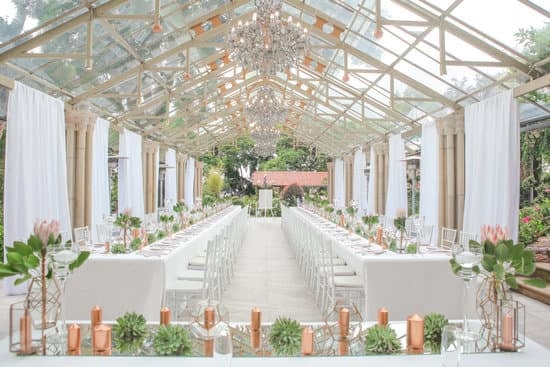Who buys the man’s wedding ring is a topic that has sparked much debate and discussion in recent years. Traditionally, the expectation has been for the man to purchase both the engagement and wedding rings for his partner, but as attitudes and cultural norms evolve, this tradition is being challenged.
In this article, we will delve into the history of wedding rings, explore the expectations around who buys the woman’s and man’s ring, examine cultural perspectives, and discuss modern trends and alternative arrangements.
The tradition of exchanging wedding rings dates back to ancient Egypt, where rings were seen as a symbol of eternity and love. Over time, this practice spread to other cultures and became an integral part of marriage ceremonies. Historically, it has been customary for the man to be responsible for purchasing both engagement and wedding rings as a symbol of his commitment to his partner.
However, in recent years, there has been a shift in these traditional roles, with more couples opting for progressive approaches to buying wedding rings. This shift reflects changing societal norms and values surrounding gender equality and financial independence. As a result, it raises important questions about who should bear the responsibility of purchasing the man’s wedding ring in contemporary relationships.
History of Wedding Rings
The tradition of exchanging wedding rings dates back to ancient Egypt, where reeds and hemp were used to create rings symbolizing eternity. The practice then spread to other cultures, including the Romans who believed that the ring should be worn on the fourth finger of the left hand, as it was thought to have a vein that led directly to the heart.
This historical background provides insight into how the tradition of giving and receiving wedding rings became deeply ingrained in many societies around the world.
In traditional Western culture, it has been expected that a man will purchase an engagement ring for his partner and also buy her wedding band. However, when it comes to the man’s wedding ring, there has not been a consistent tradition dictating who buys it. In some cases, men have purchased their own wedding bands, while in others, this responsibility has fallen to their partners or family members.
| Culture | Purchase Tradition |
|---|---|
| Western | Man traditionally purchases both engagement and wedding ring for woman; no clear tradition for man’s ring |
| South Asian | Family often plays role in purchasing both bride and groom’s rings |
| Scandinavian | Custom of exchanging matching rings popular; purchase may be a joint decision |
As societal norms continue to evolve, there is now an increasing trend of women also buying their partner’s wedding rings. This shift reflects changing attitudes towards gender roles within relationships and signifies a more equitable approach to marriage traditions. Additionally, some couples opt for alternative arrangements when it comes to purchasing the man’s ring. This includes splitting the cost or choosing other tokens of commitment instead of traditional wedding bands.
Overall, this historical perspective on the origins of exchanging wedding rings illustrates how cultural practices evolve over time. The rise in modern trends and alternative arrangements highlights a growing acceptance of diverse ways in which couples navigate the decision-making process surrounding who purchases the man’s wedding ring.
Who Buys the Woman’s Ring
The tradition of exchanging wedding rings dates back thousands of years and has evolved over time. Traditionally, the man was expected to purchase the woman’s wedding ring as a symbol of his commitment and ability to provide for her. This practice reflects historical gender roles where men were the primary breadwinners and decision-makers in relationships. However, as societal norms have shifted, so too have the expectations around who buys the woman’s wedding ring.
Changing Norms
In modern times, there has been a shift towards more egalitarian relationships, where both partners are viewed as equals in all aspects of their union, including financial responsibilities. As a result, it has become increasingly common for couples to share the cost of the woman’s wedding ring or for the woman to contribute to its purchase herself.
Financial Considerations
Another factor influencing who buys the woman’s wedding ring is financial capability. In today’s society, many couples are navigating dual-income households or facing varying degrees of financial independence. This means that traditional expectations around the man solely bearing the financial burden of purchasing the woman’s ring may not align with their current circumstances.
Personal Preferences
Ultimately, who buys the woman’s wedding ring depends on individual preferences and values within each relationship. Some couples may choose to adhere to traditional customs, while others may opt for a more modern approach based on their unique circumstances and beliefs. It is important for couples to openly communicate about their expectations and come to a mutual agreement that feels right for both parties.
Who Buys the Man’s Ring
When it comes to the purchase of wedding rings, there has traditionally been an expectation that the man will be the one to buy the engagement ring for his bride-to-be followed by the woman purchasing the man’s wedding ring. However, as societal norms and expectations continue to evolve, so too do the traditions surrounding the purchase of wedding rings.
Changing Traditions
In today’s society, there is a growing trend of women also taking on the responsibility of purchasing their partner’s wedding ring. This shift in tradition reflects a more egalitarian approach to marriage and relationships. Additionally, with more women in the workforce and holding their own financial independence, it makes sense that they would also take part in this significant purchase.
Gender Equality
The evolving norms around who buys the man’s wedding ring also tie into larger conversations about gender equality within relationships. Many couples see it as an opportunity to challenge traditional gender roles and demonstrate equality in their commitment to one another. This shift signifies a move towards creating partnerships built on mutual respect and shared responsibilities.
Financial Considerations
Another factor influencing who buys the man’s wedding ring is financial considerations. In many cases, couples may choose to split the cost of both rings equally as a way of sharing in the financial commitment of getting married. Others may opt for alternate arrangements such as exchanging other tokens of commitment instead of traditional rings. These alternative approaches reflect a broader willingness to redefine what is considered customary when it comes to buying wedding rings.
Cultural Perspectives
In many Western cultures, the tradition of purchasing a man’s wedding ring was not as common as it was for women. However, in recent years, there has been a shift in this tradition. According to a survey conducted by The Knot, 17% of men wear engagement rings. Additionally, the same survey found that 45% of couples discussed buying both engagement rings together.
In some cultures, such as Scandinavian and South American cultures, the exchange of wedding rings is seen as a mutual decision and responsibility. This means that both partners are involved in the purchase process and may even shop for their rings together. In these cultures, the idea of equality in marriage extends to the symbol of their commitment through wedding rings.
The trend of women also buying their partners’ wedding rings is gradually becoming more popular across various cultural backgrounds. This shift reflects changing societal attitudes towards gender roles and responsibilities within relationships. It also highlights a growing emphasis on equality and partnership within marriages.
Modern Trends
In modern times, there has been a shift in traditional gender roles and expectations, especially when it comes to purchasing wedding rings. While it has been a longstanding tradition for men to buy the engagement ring as well as the woman’s wedding ring, there is an increasing trend of women also taking the initiative to purchase their partners’ wedding rings.
There are several reasons why more women are opting to buy their partners’ wedding rings. One of the main factors is the desire for equality and shared responsibility in the relationship. Many couples see the purchase of wedding rings as a mutual decision and financial commitment, rather than solely the responsibility of one party.
Another reason for this modern trend is that many couples view the act of buying each other’s wedding rings as a symbol of mutual love and respect. It signifies a partnership where both individuals are actively participating in shaping their future together. Additionally, some women may want to surprise their partners with a meaningful gesture that expresses their love and dedication.
Moreover, with changing societal norms and evolving attitudes towards gender roles, many couples are redefining traditional customs and creating new traditions that align with their values and beliefs. This includes reexamining who should purchase the man’s wedding ring, which has led to more women taking on this role in today’s relationships.
- Women buying men’s wedding rings symbolizes equality in relationships
- Many couples view both individuals taking part in purchasing wedding rings as a symbol of partnership
- Changing societal norms have led to more women buying men’s wedding rings
Alternate Arrangements
In modern times, the tradition of men purchasing their own wedding rings is becoming increasingly flexible. While it was once expected for the man to buy his own ring, many couples are now exploring alternative arrangements that reflect their unique relationship dynamics. Here are some alternative options for purchasing the man’s wedding ring:
1. Splitting the Cost: Many couples choose to split the cost of their wedding rings equally. This approach acknowledges the mutual commitment and financial equality within the relationship. It can also be a practical solution for couples who may have different budget constraints.
2. Exchanging Other Tokens of Commitment: Some couples opt for different symbols of commitment, rather than traditional wedding rings. This could include meaningful jewelry, tattoos, or other personalized items that hold sentimental value for the couple.
3. Mutual Contribution: In some cases, both partners contribute to a joint fund specifically designated for purchasing their wedding rings. This approach emphasizes shared financial responsibility and unity in decision-making.
The changing attitudes towards who buys the man’s wedding ring emphasize the importance of open communication and mutual understanding in relationships. As societal norms continue to shift, couples are encouraged to discuss and decide together what feels right for them when it comes to this significant symbol of love and commitment.
Conclusion
In conclusion, the tradition of wedding rings has evolved over time, and with it, the expectations around who buys the man’s wedding ring. While historically it was expected for the man to purchase both rings as a symbol of his commitment and ability to provide, modern attitudes have shifted towards a more equal approach. Many couples today are rethinking traditional gender roles and exploring new ways to express their love and commitment through the purchase of wedding rings.
The history of wedding rings dates back centuries, with different cultures and traditions influencing the exchange of rings. In some cultures, it is customary for the woman’s family to provide both rings, while in others, the groom’s family takes on this responsibility. As society becomes more progressive and open-minded about gender equality, couples are more inclined to discuss and decide together who will buy the man’s wedding ring.
Ultimately, when it comes to who buys the man’s wedding ring, what matters most is that both partners feel comfortable with their decision. Whether it is a joint purchase, one partner taking on the responsibility, or another arrangement altogether, the act of exchanging rings symbolizes mutual love and dedication. It is essential for each couple to consider their own beliefs and values when approaching this tradition within their relationship.
Frequently Asked Questions
Who Is Supposed to Get the Man’s Wedding Ring?
Traditionally, the man is supposed to wear a wedding ring as a symbol of commitment and love. The wedding ring is typically placed on the fourth finger of his left hand during the marriage ceremony.
Is the Girl Supposed to Buy the Guys Wedding Ring?
It is not traditional for the girl to buy the guy’s wedding ring. In most cultures, it is the responsibility of the man to choose and purchase a wedding ring for himself, while the woman selects her own engagement and wedding rings.
Who Should Pay for the Mans Wedding Ring?
Traditionally, the cost of the man’s wedding ring is paid by him or in some cases, by his family. However, in modern times, many couples choose to split or share the cost of both engagement and wedding rings as a way to symbolize their partnership and shared financial responsibilities.

Welcome to my blog about home and family. This blog is a place where I will share my thoughts, ideas, and experiences related to these important topics. I am a stay-at-home mom with two young children. I hope you enjoy reading it! and may find some helpful tips and ideas that will make your home and family life even better!





